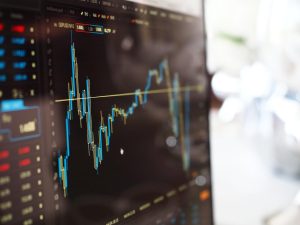Introduction of Forex Trading Strategies
Forex trading is a comprehensive and intricate scheme of interchanging currencies on a global basis, therefore, it requires a well-thought-out approach to gaining profit. The profitable strategy of Forex trading has to be based on the dynamics of the market, economic indicators, and personal risk tolerance. In this article, we will find out the major steps toward making a robust Forex trading strategy, which can help in reaping consistent returns over time.
Understanding the Forex Market
Before one starts building a strategy, an understanding of the very market fundamentals is necessary. It is observed that a large number of global economic events, interest rates, political stability, and other macroeconomic features happen to impact the Forex market. This is particularly true for forex trading in Nigeria, where economic and political factors can have significant effects on currency movements. On this end, traders must be aware of such factors and be able to know how they impact currency movements. Keeping up-to-date on economic news and market trends is central to developing a trading strategy that can adapt to changing circumstances.
Defining Your Trading Goals and Risk Management
The core of any good trading strategy lies in properly set goals and defined rules of risk management. It means that the trader has to define what he wants to achieve and how much risk he is ready to take, by these goals. It has to establish a realistic profit target and a loss limit individually. It has tools for managing risk through placing stop-loss orders that automatically offset a trade at a certain level to avoid extreme losses.
Developing a Trading Plan
A good trading plan is important for developing the discipline to act and for keeping emotions at bay. This plan will define specific market conditions that will trigger entry and exit points, time frames for trading, and tools that one will use to make trading decisions—informed by technical indicators or chart patterns.
Test Your Strategy
A strategy needs to be tested for its viability before it is applied in live trading. Backtesting is a technique where the strategy gets applied to the historical data of security to see how it would have turned out in the past. Besides that, most of the trading platforms also offer some features to use simulation wherein one can practice their strategies on real-time markets with virtual money. This testing phase becomes very critical in fine-tuning the strategy and adjusting any parameters if needed.
Continuous Learning and Adaptation
The Forex market changes in a moment and personal sentiments of people and economic conditions are also on the rise or fall at moments. Broker traders who want to succeed in trading never stop improving their strategies due to emerging information or changed circumstances within the market. This may involve regular revisions of the trading plan, continuous education, and staying updated with the global economic scenario.
Conclusion
A profitable Forex trading strategy calls for in-depth knowledge of market dynamics, a clearly stated statement of goals for trading, risk management techniques, and a style compatible with the trading to be undertaken. If rightly planned and adjusted over time by the suggestive shifts of the market, such traders will have the ability to come up with a strategy that, on the one hand, reduces their risks but on the other hand contributes to an increase in potential returns. To emphasize, successful trading is not only about high returns but is also concerned with steady performance combined with good risk control.

